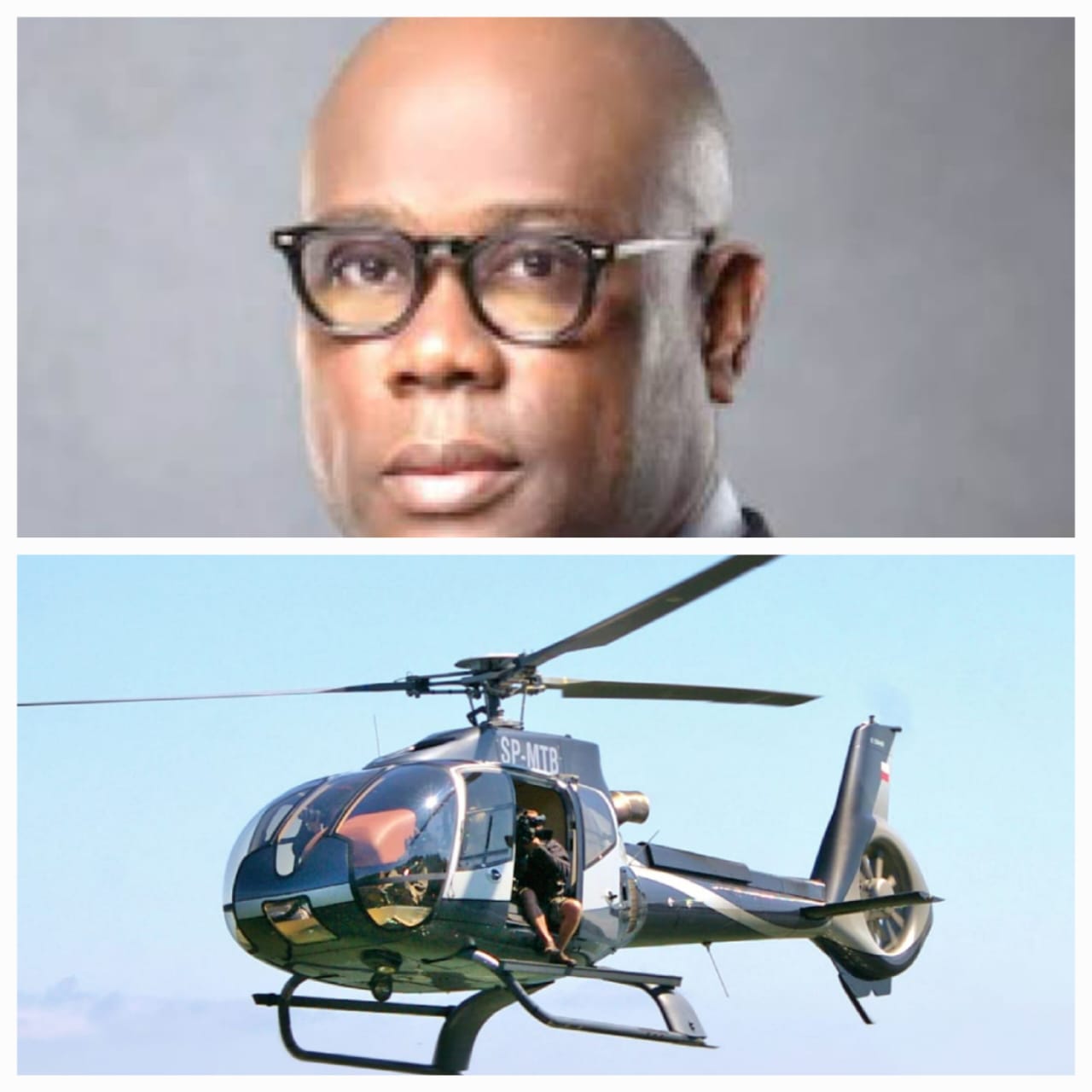Two days ago, frontline banker and Group CEO of Access Holdings, Herbert Wigwe, amongst others, were killed in an helicopter crash in the United States of America.
Others who were also killed in the ill fated flight were Wigwe’s wife, his son, a former MD of NGX , Abimbola Ogunbanjo, as well as two crew members.
The United States National Transportation Safety Board, NTSB, disclosed that the helicopter in which Herbert Wigwe was travelling caught fire after it crashed.
Michael Graham, one of the board members, made this known during a media briefing on the ill-fated helicopter crash on Sunday.
The helicopter that was involved is said to be the Eurocopter EC130 (now Airbus Helicopters H130).
According to information gathered from Wikipedia, the EC130 is a single-engine helicopter. It uses a three-bladed Starflex main rotor which is matched to an enclosed tail fan anti-torque device, known as a Fenestron, the latter feature replacing the traditional tail rotor found on the older AS350.
The Fenestron has unevenly spaced blades to reduce noise generation by 50% compared to a tail rotor; this enabled an FAA Appendix H fly-over noise signature of 84.3 EPNdB, 8.5 dB below stage two limits.
The EC130 uses the Turbomeca Arriel 2D turboshaft engine; the performance of this powerplant has led to the type having been described as possessing “better power margins and range than competing models, particularly in hot and high conditions”.
The EC130 T2’s enhanced Arriel engine is equipped with Full Authority Digital Engine Controls; a dual hydraulic system derived from the Eurocopter AS355 was also adopted.
The EC130 was designed with various avionics and safety features, including flight data recorders, crash-worthy seats, and redundant flight systems for greater reliability; the EC130 T2 had further safety features installed.
Vertical Magazine described the cockpit instrumentation as being “straightforward” and the control response as “tight and pleasant”.
Piloting aids such as the Vehicle and Engine Multifunction Display (VEMD) is claimed to reduced pilot workload, thereby increasing ease-of-use and overall safety. Dependent on customer demand and role, tactical instrumentation and equipment consoles may also be installed in the cockpit.
Typically, the cockpit is configured for single pilot operations, the pilot being seated on the left-hand side of the forward cabin to reduce the risk of passenger interference with the controls posed by a right-hand position; dual controls can be optionally installed.
The EC130 is equipped with integrated visual flight rules (VFR) equipment coupled to a Global Positioning System (GPS) receiver, making it readily capable of flight under both day and night conditions.
The EC130 reportedly has the largest cabin of any single engine helicopter in its class, with reportedly 54 per cent greater unobstructed space and 143 per cent more baggage space than the competing Bell 407.
On the EC130, there are three prime seating configurations; a standard layout with a single pilot and six passengers, a similar arrangement with the two central seats facing aft, and a high density layout with three front passengers seats in line with the pilot.
The EC130 was the first rotorcraft to become available with the business executive-orientated Stylence cabin configuration.
The EC130 T2 is equipped with active anti-vibration control systems adapted from the Eurocopter EC225 Super Puma, these comprise five accelerometers and four linear actuators to produce smooth flight conditions and improved comfort for passengers on board.
The EC130 can also be quickly configured between passenger and freight configurations.
In the emergency medical services (EMS) role, various interior configurations have been developed for the type; optional equipment includes customised mounting points for medical equipment, air compressors and liquid oxygen tanks, and United Rotorcraft’s Lowered Patient Loading System (LPLS)
The EC130 has been popular with Air medical services (AMS) operators due to its large cabin being capable of accommodating up to two stretchers and two attendees, as well as a baggage area for storing equipment, wide side doors for access, and its enclosed Fenestron tail for safety.
For law enforcement roles, the ability for various optional equipment to be installed on the EC130 is promoted, such as electro-optical systems, forward-looking infrared (FLIR) cameras, and search lights.
In a cargo capacity, it is common for the rotorcraft to be fitted with additional external mirrors and a cargo sling.













